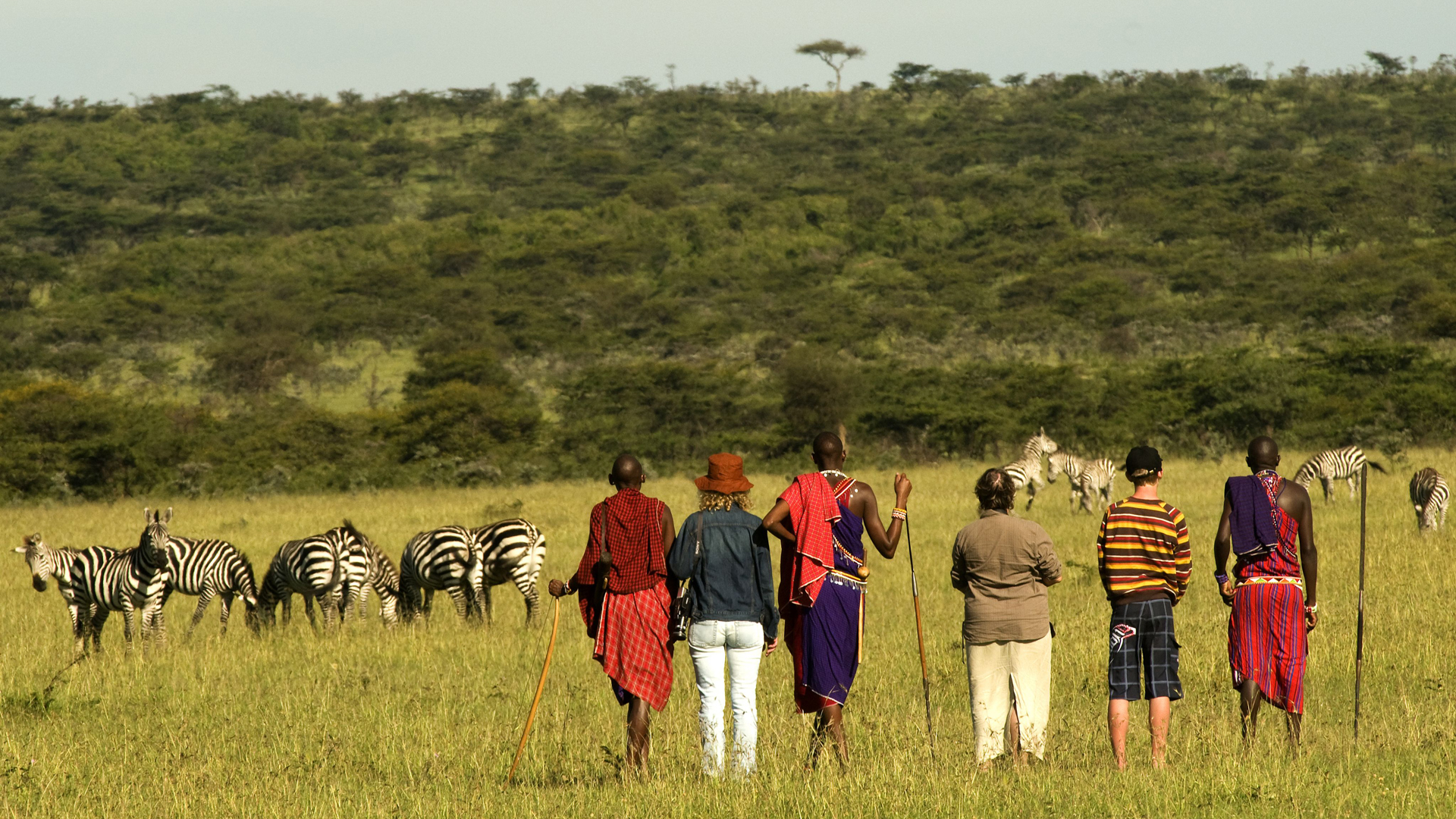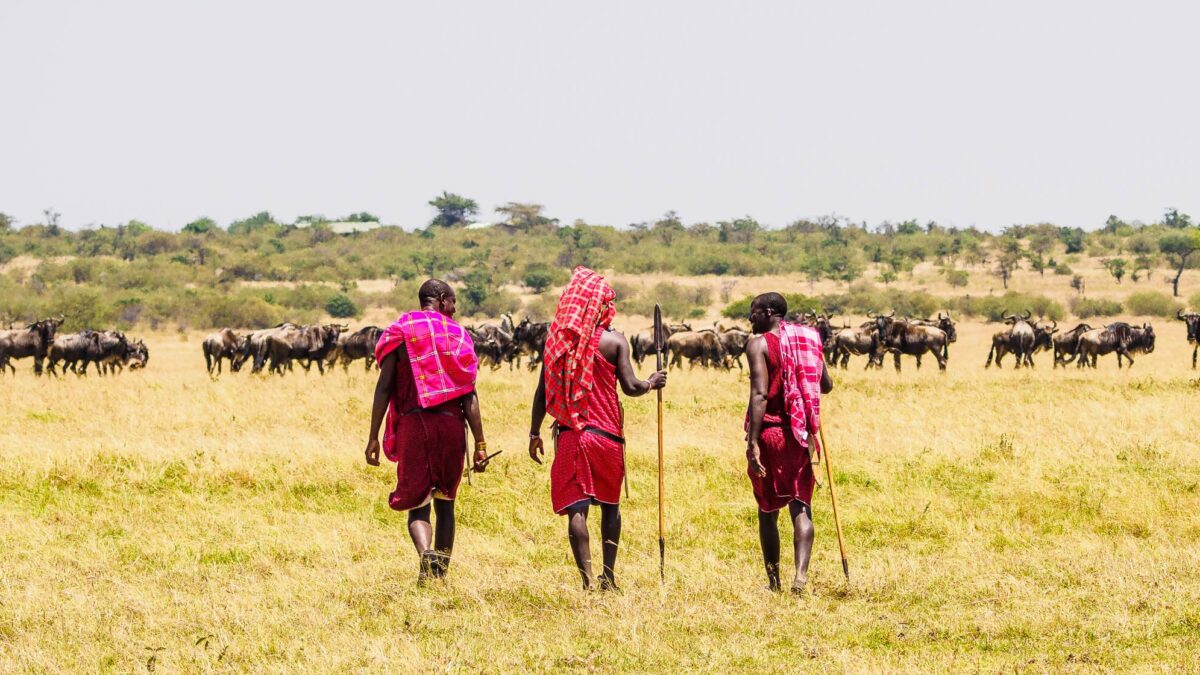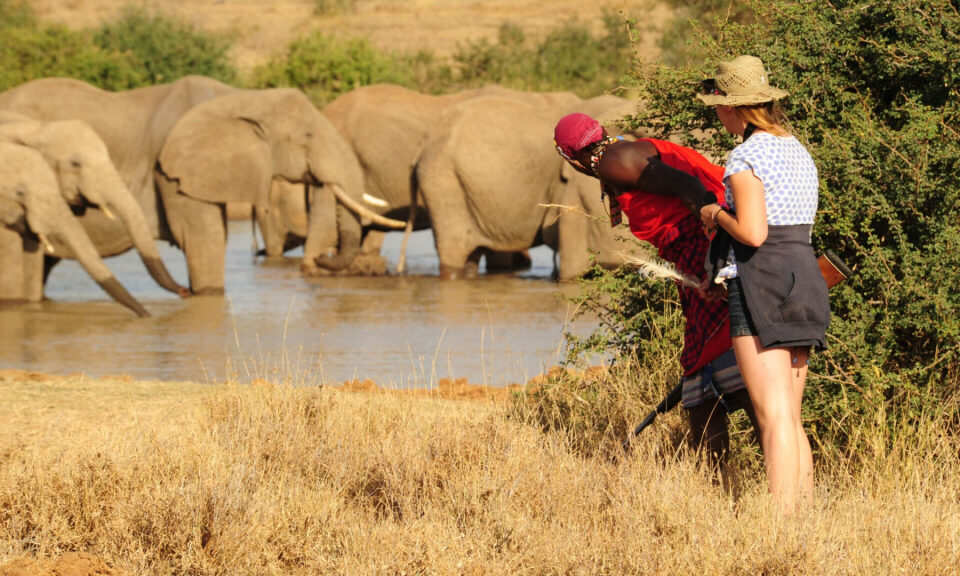- GET IN TOUCH WITH US:
- +256 753518160
- +256 777842166
- info@experiyatourcompany.com

Are there walking safaris in Kenya?
November 17, 2025Who Are the Maasai People of Kenya?
The Maasai people are one of Africa’s most iconic and culturally rich ethnic groups. Known for their striking dress, vibrant beadwork, deep-rooted traditions, and close connection to wildlife and landscapes, the Maasai have become symbolic of East African heritage. Many travelers visiting Kenya are fascinated by the Maasai way of life and curious to understand more about their history, culture, and identity. This often leads to the question: Who are the Maasai people of Kenya?
The Maasai are a semi-nomadic pastoralist community living primarily in southern Kenya and northern Tanzania. With their bright red shukas (traditional cloth), age-old customs, and unique social structures, they have maintained a cultural identity that is both distinctive and enduring. They are not just a tourist attraction—they are a resilient and proud people whose traditions are deeply connected to the land.
In this detailed blog, we explore the origins, culture, social structure, spirituality, lifestyle, and modern-day challenges of the Maasai people. We also highlight the significance of their relationship with Kenya’s national parks and the importance of respectful cultural tourism.
The Origins of the Maasai People
The Maasai belong to the broader Nilotic ethnic group, believed to have migrated south from the Nile Valley into Kenya centuries ago. Oral history suggests that the Maasai migrated through South Sudan before settling in Kenya and northern Tanzania between the 15th and 18th centuries.
They established themselves in the Great Rift Valley, a region known for fertile plains, rich grazing lands, and an abundance of wildlife—a combination that supported their pastoral lifestyle.
Key elements of Maasai heritage include:
Cattle herding as the foundation of life
Warrior traditions
Strong cultural identity
Deep respect for the land and environment
A spiritual connection to cattle, which they consider sacred
Where Do the Maasai Live?
In Kenya, Maasai communities are found mainly in:
Kajiado County
Narok County
Laikipia
Baringo
Trans Mara
They also inhabit regions around Kenya’s most famous parks such as:
Maasai Mara National Reserve
Amboseli National Park
Tsavo National Park
Nairobi National Park
Their presence near these wildlife-rich areas plays a major role in Kenya’s conservation landscape.
The Maasai Lifestyle and Pastoral Heritage
The Maasai are traditionally pastoralists. Their lives revolve around cattle, which they consider a gift from God and a measure of wealth, identity, and social status.
To the Maasai:
Cattle provide food (milk, blood, and occasionally meat)
Cattle are used in ceremonies
Cattle represent prosperity
Cattle are exchanged in marriage negotiations
Cattle connect families and clans
Their semi-nomadic lifestyle allows them to move with their herds in search of fresh grazing land. This mobility is central to Maasai identity and survival in the dry savannah regions of Kenya.
The Social Structure of the Maasai
The Maasai social system is organized into age-sets and clans, each with specific roles and responsibilities.
Age-Sets (Olgiloriti)
Age-sets are groups of males of similar ages who progress through life stages together.
The key stages include:
Children
Morans (young warriors)
Junior elders
Senior elders
Morans, the warrior class, play a critical role in protecting the community and livestock, traditionally engaging in rites of passage and training exercises.
Clan Structure
The Maasai belong to several clans (Olosho), determined by lineage. Clans are important for social identity, marriage rules, and community responsibilities.
The Role of Morans (Warriors)
Maasai morans are known for their courage, agility, and distinctive dress. They are trained in survival skills, tracking, and protection.
Historically, becoming a moran involved:
Leaving home to live in a manyatta (warrior village)
Learning hunting skills
Undergoing rites of passage
Demonstrating physical endurance
Today, while hunting wildlife is no longer practiced due to conservation laws, the cultural significance of morans remains strong. They are respected as protectors and ambassadors of Maasai culture.
Traditional Dress and Beadwork
The Maasai are known worldwide for their vibrant dress and intricate beadwork.
Shukas
The shuka, traditionally red but sometimes blue or checkered, symbolizes:
Bravery
Unity
Identity
Red is believed to scare predators and symbolizes strength.
Beadwork
Maasai beadwork is not only beautiful but deeply symbolic. Colors represent different values:
Red: bravery and unity
Blue: energy and the sky
Green: nourishment and land
White: purity and milk
Yellow: fertility
Black: resilience
Women are the primary creators of beadwork, and their art is used in ceremonies, marriages, and daily wear.
Traditional Maasai Homes (Manyattas)
Maasai homes, known as manyattas, are built by women and made from:
Mud
Cow dung
Grass
Sticks
Ash
These small, oval-shaped structures provide shelter and maintain cooler temperatures inside. Manyattas are arranged in a circular village protected by thorn fencing to keep predators away from livestock.
Maasai Food and Diet
The traditional Maasai diet revolves around:
Milk
Blood mixed with milk
Meat (occasionally, usually during ceremonies)
Honey water and herbal soups are also common. In modern times, many Maasai have incorporated:
Cornmeal
Rice
Vegetables
into their diet due to changing lifestyles.
Maasai Religion and Spiritual Beliefs
The Maasai believe in a single deity called Enkai or Engai, who manifests in two forms:
Black Enkai: benevolent and life-giving
Red Enkai: angry and retributive
Cattle hold a sacred place in Maasai spirituality. Rain, land, and livestock health are considered blessings from Enkai.
Spiritual leaders known as Laibons play important roles in:
Guidance
Healing
Prophecy
Ceremonies
Ceremonies and Rites of Passage
Maasai culture is rich in ceremonies that mark major life stages.
Eunoto (Warrior graduation)
Transition of morans into elders
Emuratare (Circumcision)
A major rite of passage into adulthood
Enkang oo-nkiri (Meat-eating ceremony)
Important feast among warriors
Blessing Ceremonies
Led by elders and laibons
Ceremonies are often accompanied by singing, dancing, and elaborate beadwork.
Maasai Music and Dance
Music plays a central role in Maasai culture. Their songs are rhythmic, powerful, and reflective of community values.
The Adumu (Jumping Dance)
Perhaps the most famous Maasai dance
Performed by morans
Participants jump straight up with strength and grace
The height of the jump symbolizes stamina and attracts admiration.
Maasai and Wildlife Conservation
The Maasai have coexisted with wildlife for centuries. Their grazing practices often benefit the ecosystem by preventing overgrowth and maintaining grasslands.
Today, many Maasai communities partner with conservancies such as:
Olare Motorogi
Naboisho
Ol Kinyei
Mara North
Lewa (Laikipia region)
These partnerships provide:
Income through tourism
Conservation jobs
Education opportunities
Protection for wildlife corridors
The Maasai have become strong allies in protecting Kenya’s wildlife heritage.
Challenges Facing the Maasai Today
Despite their rich cultural heritage, the Maasai face several modern challenges:
Land pressure
Climate change
Education gaps
Cultural erosion due to urbanization
Economic hardship
Many Maasai now balance traditional lifestyles with modern influences, working in tourism, conservation, education, and business.
Experiencing Maasai Culture Respectfully
Travelers can visit Maasai villages near Kenya’s major parks. A respectful cultural visit includes:
Learning their history
Supporting local artisans
Participating in songs and dances
Understanding their daily life
Avoiding exploitation or staged experiences
Cultural immersion with ethical operators enriches both visitors and communities.
Book Your Cultural and Wildlife Safari with Experiya Tour Company
Understanding who the Maasai people are adds depth and meaning to any safari in Kenya. Their culture is woven into the landscapes, wildlife, and identity of the country. To experience Maasai culture authentically—alongside world-class wildlife safaris—book your journey with Experiya Tour Company.
Experiya Tour Company crafts immersive itineraries that include visits to Maasai communities, scenic conservancies, and iconic parks like Maasai Mara, Amboseli, Samburu, and beyond. With expert guides, responsible cultural experiences, and seamless travel planning, your Kenyan safari becomes richer, deeper, and unforgettable.
Book your safari with Experiya Tour Company today and discover the land, people, and wildlife that make Kenya extraordinary.




